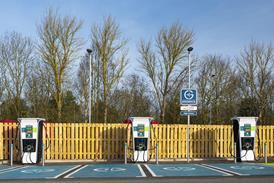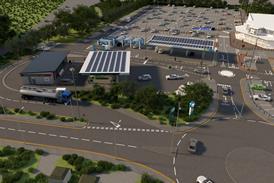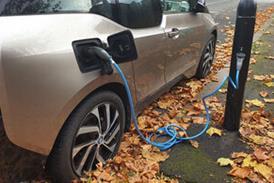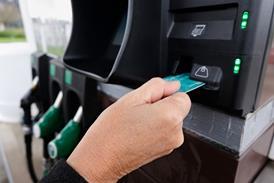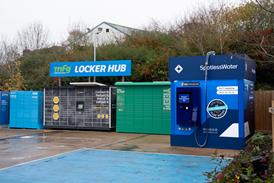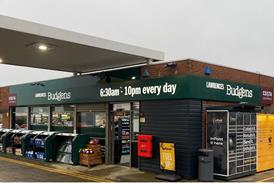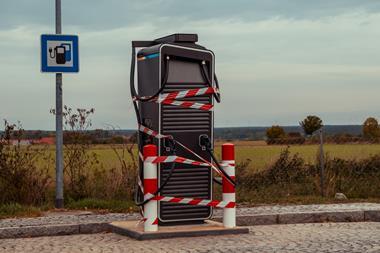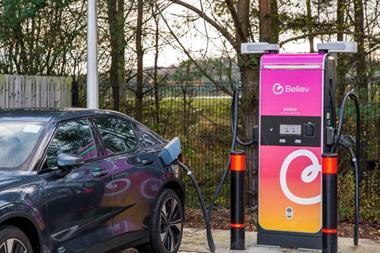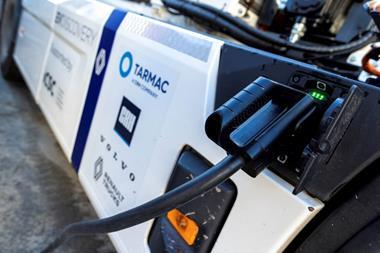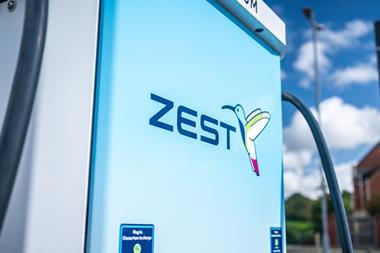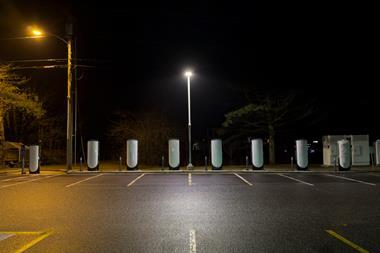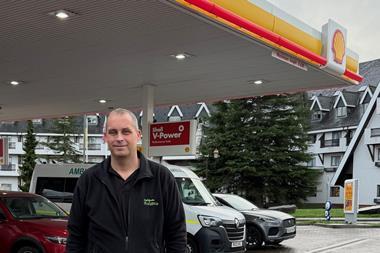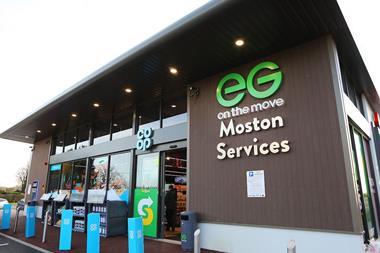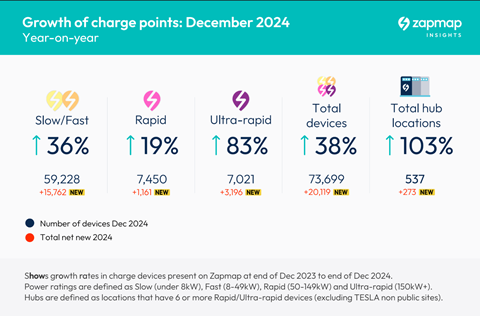
More than 20,000 new chargepoints were installed during 2024, bringing the total number across the country to 73,699 — a year-on-year increase of 38%.
New data from Zapmap reveals that the rate of installation of chargepoints also grew from an average of 1,400 per month to 1,650 per month.
Chargepoint growth was particularly strong in the ultra-rapid segment (150kW+), which saw an increase of 84% in installations since the end of 2023. Zapmap reports that these hubs are being rolled out not only at motorway service areas but also in varied locations such as retail parks, car parks and farm shops, and are proving increasingly popular with EV drivers.
There are now more than 7,000 150kW+ chargers, with a total of more than 14,000 over 50kW available, while the number of hubs (six or more 50kW chargers) rose from 264 at the end of 2023 to 537 at the end of 2024.
Last month, the National Audit Office said that the number of public chargepoints was on track to meet government targets by 2030. More broadly, Zapmap says its charging statistics show encouraging growth across all the charging use cases from the en route chargers referenced above, to destination and on-street chargers, with progress being made in addressing regional inequalities.
Destination chargers – which enable EV drivers to charge while they stop, rather than stopping to charge – continue to be boosted across the UK. There are 12,000 additional chargers now available at destinations such as restaurants, hotels, retail car parks and leisure areas across the UK.
While the provision of on-street chargers – supporting those EV drivers without off-street parking – has grown, Zapmap found that 72% of these chargers were concentrated in Greater London. Many other areas such as Coventry and Liverpool also have good local availability, but overall provision at a local level is still variable. The organisation says that with the LEVI (Local Electric Vehicle Infrastructure) government funded projects starting to come to fruition, there should be a more equitable distribution of on-street charging provision towards the end of 2025.
Zapmap’s statistics also show significant progress in the distribution of en route chargers outside London, with nine out of 12 geographical areas of the UK now having over 1,000 50kW+ chargers. Wales and the North West continue to be less well covered, although they have made good progress over the course of 2024, while the pace of installations in Northern Ireland continues to lag.
Zapmap’s annual driver survey, released last month, showed an average satisfaction rating of 87% for drivers of electric cars, with fewer than 3% saying they would return to a petrol or diesel car. While around 80% of EV drivers charge at home, from the 800,000-plus home chargers installed in driveways, 51% of EV drivers use the public network at least once a month, reflecting the continued importance of public infrastructure. There remain some concerns, mainly around reliability and availability of public chargers, but 61% of respondents believe that the public charging infrastructure has improved over the past year. In parallel, Zapmap data also reveals that by the end of 2024, over 2.5million successful charge sessions were completed in a month. This reflects both the improvement in reliability and the significant overall growth in charging infrastructure, which has increased by 38% over the last 12 months.
Melanie Shufflebotham, co-founder and COO at Zapmap, says: “Last year was another record year for charging infrastructure growth with en route charging points in particular being installed ahead of the growth in EV sales.
“As we move into 2025, we can expect to see the benefits of the PCPR (Public Charge Point Regulations) consumer regulations coming into effect combined with the impact of LEVI-funded projects reaching local authorities and bringing more equitable access to charging devices.
“Confirmation on a strong and clear ZEV mandate, following the government’s recently communicated consultation, will also help to bring certainty and confidence to both infrastructure providers and UK drivers that the transition is happening now.”
But while it is positive that there are more chargepoints, says the RAC, the motoring organisation would like to see the matter of affordability being addressed too, particularly for motorists without their own driveway:
”There is still a huge gulf in prices between public and home chargers, partly due to the higher rate of VAT at public chargepoints compared to the 5% domestic rate,” says RAC senior policy officer Rod Dennis. ”Chargepoint installations and cheaper public charging costs are two sides of the same coin when it comes to ramping up private EV demand.”

